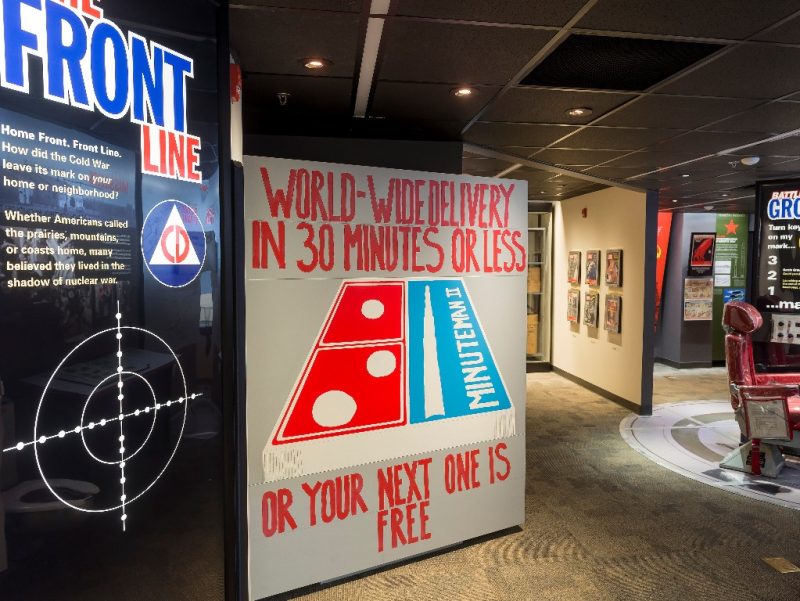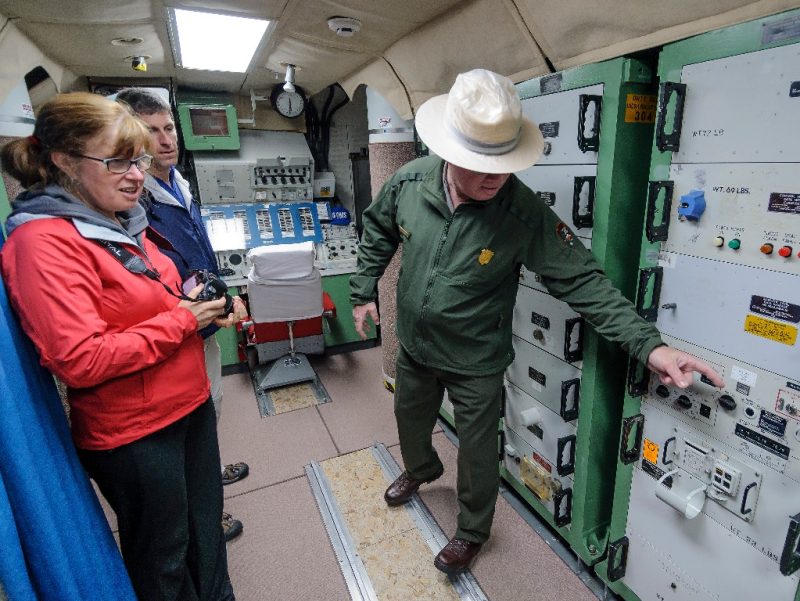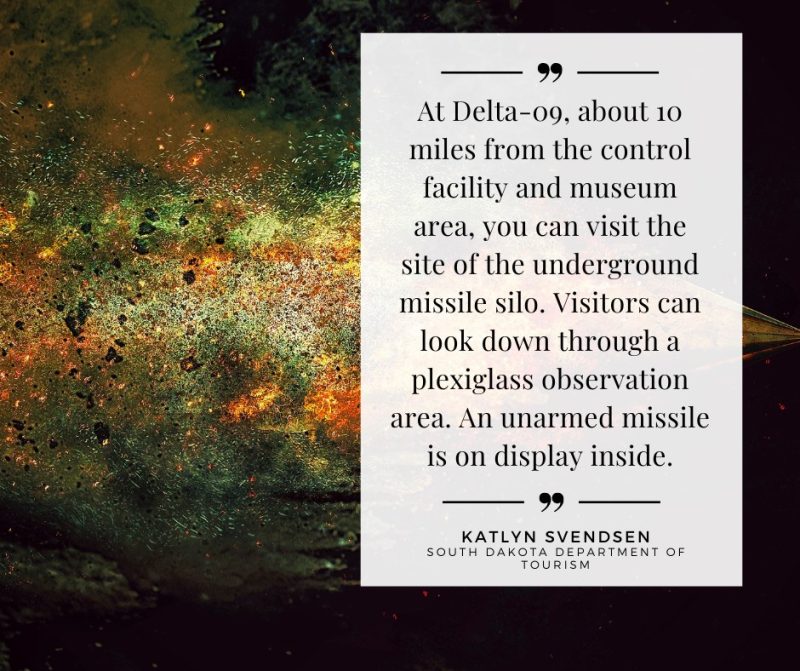Tourists can view deactivated missile site
IAN STALKER
South Dakota is inviting visitors to view a particularly powerful reminder of Cold War tensions which has become more poignant in the past year as Russia and the West angrily denounce each other over the Ukraine war.
Katlyn Svendsen of the South Dakota Department of Tourism notes western South Dakota was from 1963 until the early 1990s home to several nuclear missiles, along with other locations in the Great Plains, and today Minuteman Missile National Historic Site is open to visitors to learn about that tense time in history.
The site includes the below-ground Delta-09 missile silo, which once contained a fully operational Minutemen Missile armed with a powerful 1.2-megaton nuclear warhead.
Two sites at the one-time military base that’s now administered by the U.S. National Park Service are now open for visitors. Launch Control Facility Delta-01 and Launch Facility (Missile Silo) Delta-09. The U.S. National Park Service began overseeing the site in 1999 and 2014 saw a visitor center/museum opened to accommodate more people than the tours of the actual control centre underground could.

“The sites are deactivated,” Svendsen reports. “At Delta-09, about 10 miles from the control facility and museum area, you can visit the site of the underground missile silo. Visitors can look down through a plexiglass observation area. An unarmed missile is on display inside.”
During the Cold War, an arsenal of nuclear missiles was placed in the U.S. Great Plains, with the Minuteman Missile National Historic Site reporting that the missiles were “hidden in plain sight” for 30 years.
The Minuteman Missile became an “iconic weapon in the American nuclear arsenal.”
Svendsen says some visitors may find viewing the site unnerving, particularly given today’s West-Russia tensions but adds it does provide remarkable insights into strained times.
“One thing I love about visiting the facility now is many of the workers for the National Park Service are former missileers that worked at this very location. It won’t be too much longer and those first-hand stories will no longer be able to be told. It is especially eye-opening to listen to these stories directly from the people who worked here and under this pressure every day.

“I think (a visitor reaction) somewhat depends on the generation that you come from, though none of the tensions and realness of this topic have ever gone (entirely) away,” Svendsen continues. “But if you’re of the baby-boomer generation, certainly this is a very chilling location to visit as this was the era you grew up in ‘duck-and cover’-drills, constant news and fears were certainly part of everyday life for that generation. Generations following are fascinated and likely realize that this is still very real, and history that didn’t occur too long ago in the past.”
“This is an incredible opportunity to learn more about national defence, the protocols, and how serious this was. This location provides visitors with the specific places where the people and stories associated with Minuteman Missiles, strategic nuclear deterrence and the Cold War occurred.”
Entrance to the museum at the Minuteman Missile NHS Visitor Center features a replica of the iconic blast door down at Delta-01.
The Launch Control Facility compound includes the topside support building and the associated underground Launch Control Center located 31 feet below the plains of western South Dakota. The topside supported the missileers stationed underground in carrying out their mission. Equipment such as a backup generator for auxiliary power, and environmental control provided backup support in the event of a power outage or an attack.

There were always eight people topside, all enlisted Air Force personnel who were stationed at Ellsworth Air Force Base, 60 miles west. Those personnel included a Facility Manager (top ranking non-commissioned officer on-site), a cook and six security police. They worked three straight days, followed by three off. In addition, the site had bunk housing for visitors, such as maintenance teams who were required to remain overnight at the nearest Launch Control Facility (LCF) if they exceeded 16 hours in a work shift. They would spend the night at the nearest LCF before driving back to Ellsworth Air Force Base the following day. The building also contained a Security Control Center, where all security activities were coordinated and personnel would be processed when coming on site. Other areas topside included a day room, dining area and recreational room that Air Force support personnel used while at the facility.
Built for nuclear war, the control centre features a small elevator and a tight underground space. To protect the historic facilities and provide for visitor safety, each tour is limited to six participants and a park ranger. This tour begins and ends at the entry gate to the Delta-01 compound. All tours of the Delta-01 Launch Control Facility require advanced reservations and an amenity fee. Reservations can be made on-line or by phone at 605-717-7629. Reservations can be made up to 90 days prior to tour date. Same-day tour reservations are not available in the summer. Summer sees tours fill up to eight weeks in advance. All tour participants must be able to be physically capable of climbing two 15 foot ladders unassisted in the event of an elevator failure. More information on tours and tour reservations.
Tours are limited due to space capacity. Underground tours allow visitors to experience more of the silo and the control rooms. Each tour is about 30 minutes and are first-come, first serve. Tickets can be purchased in advance online.
Svendsen says the Minuteman Missile National Historic Site is a particularly insightful experience that awaits South Dakota visitors.
“The Minuteman Missile National Historic Site is the only historic site run by the National Park Service that is related to Cold War history,” she says. “It is a chilling reminder, and opportunity to learn about what could have been.”

















